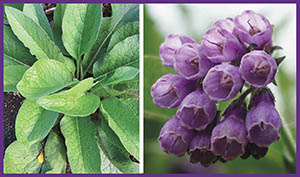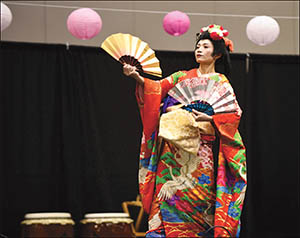Comfrey is a perennial herb that has been used topically for centuries for its soothing and healing properties.
By Dayna Carter
When I first heard of this plant, I was skeptical about the stories. One version claimed this plant was used by American Indians to heal broken bones. I have 2 friends that swear by it and last week a comfrey poultice was suggested as a treatment for one of my baby goats who had a sore hip. I tried but she continued to tear off the bandage. So, I am going to make a salve that can be applied directly to the skin.
So, I took a quick dive into the facts about this herb. It is one thing to hear about a plant and quite another to discover the scientific facts and how to prepare it for use.
Comfrey is a perennial herb that has been used topically for centuries for its soothing and healing properties. Important note: it contains pyrrolizidine alkaloids, which can be toxic to your liver, so don’t drink it.
This herb helps in reducing swelling, redness, and pain associated with minor injuries. It promotes cell proliferation which makes it an effective treatment for cuts and scrapes. Along with these benefits, it reduces the pain and hastens the healing of bruises and sprains along with soothing and healing minor burns including sunburns.
Comfrey for first aid:
Make a Poultice. (A poultice is a soft, moist mass of herbs that are applied directly to the skin to aid in healing.) Simply crush fresh comfrey leaves to release the juices and throw them in your blender with a few tablespoons of carrier oil such as olive, castor, or coconut. Place the moist leaves directly on your skin. Cover the area with a bandage to keep it in place for 30 minutes.
Comfrey as a salve or ointment:
Fill a clean glass jar with dried comfrey leaves and roots, Cover the comfrey with carrier oil and seal the jar. Place it in a warm sunny spot for about 2-4 weeks to allow the oil to extract out the medicinal properties. Strain the oil to remove the plant material and transfer it to a clean container. Now melt beeswax and then add the comfrey extracted oil. Continue to add beeswax until you get your preferred consistency. It is important to wash the affected area with clean water and mild soap before applying any comfrey preparation.
Pregnant or breastfeeding individuals should not use any comfrey products at all. If you have any health concerns, please check with your healthcare professional before using it as a first aid solution.
Dayna Carter, a Garland County Master Gardener, volunteers with GC Master Gardeners of the UofA Div. of Agriculture, Cooperative Ext. Service. Master Gardeners pool skills and resources to improve home horticulture, stimulate interest in plants and gardening, and encourage beautification. For more info, call 501-623-6841 or abates@uaex.edu.









